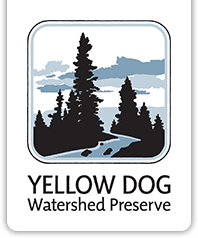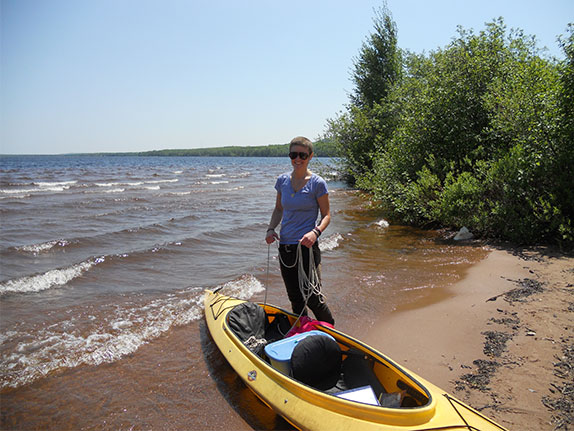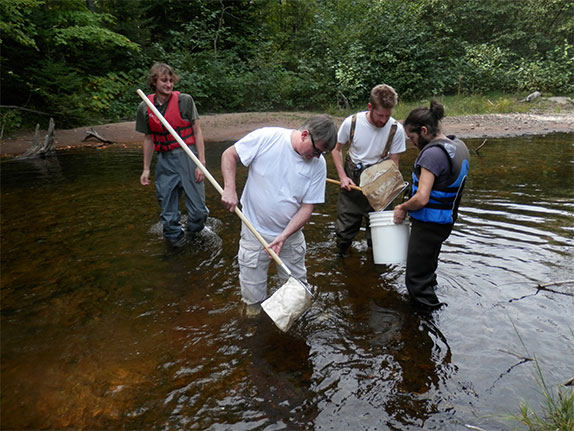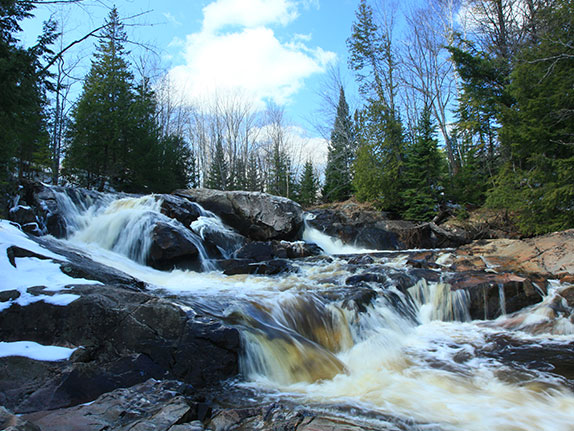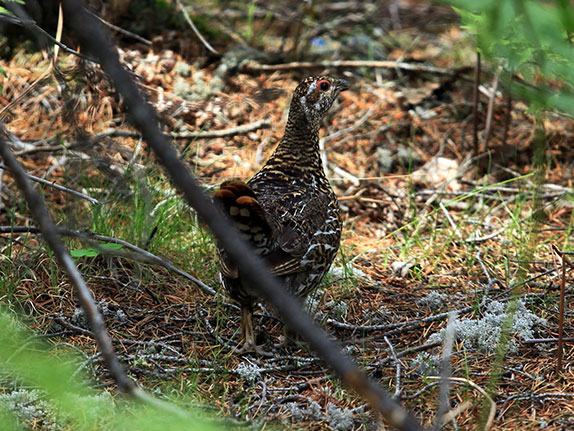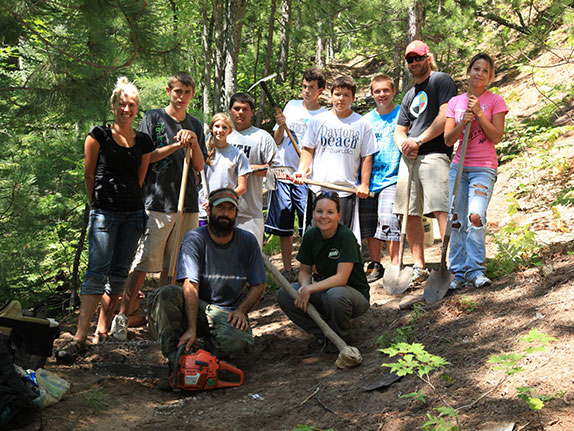
Community
Forest Benefits
A Community Forest is a protected, forested landscape that is valued and managed by the community for a variety of benefits, including recreational, educational, economic, social, and environmental benefits. The public has a history of using the Yellow Dog River Community Forest since the previous ownership had the land enrolled in the Commercial Forest Reserve Act. Below are descriptions of each type of current community benefits.
Recreation and Public Access
Access for the entire river is concentrated to one primary point, which is located within the proposed forest. While other access points exist outside of the proposed forest, no other point features both the location along a year round, maintained public road and open access to the public. Additional access points exist within the proposed forest but are located on seasonal roads and not maintained.
Since the river is the primary feature of the proposed forest, water based recreation is one of the most popular uses. Whitewater kayaking, swimming, and fishing are the main activities. The Yellow Dog River is considered a Designated Trout Stream by the state, which draws many to fish the river.
Land based recreation includes but is not limited to hiking, camping, hunting, biking, geocaching, and skiing. Established trails are few but opportunity exists to create silent sport trails. This area is also popular for birding, which is the fastest growing outdoor activity, a 232 % increase over the past decade.
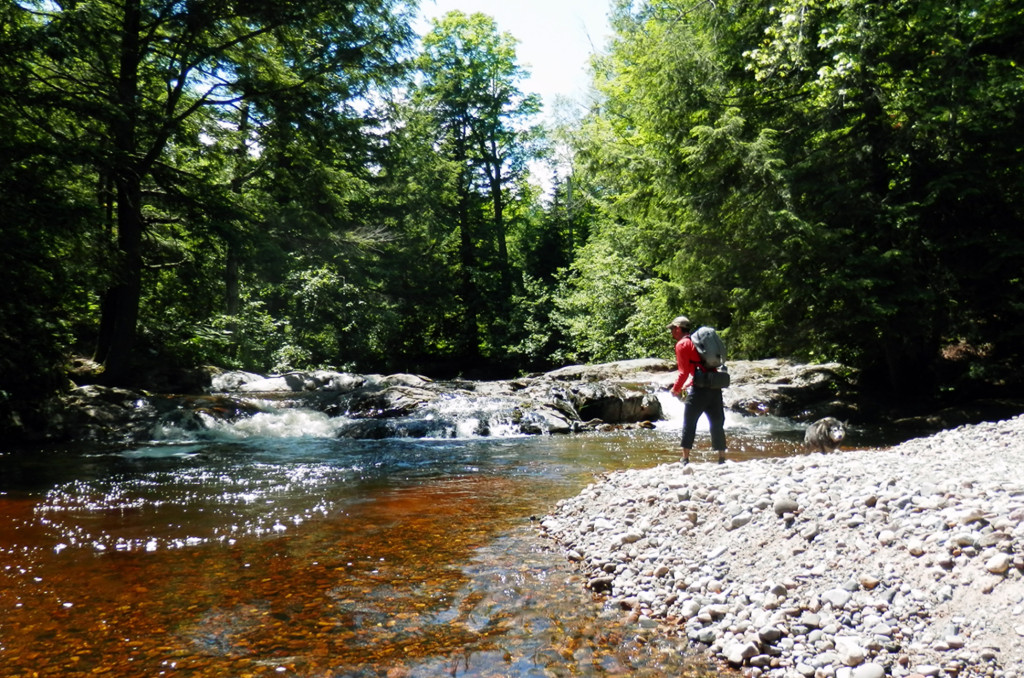
Education
Learning institutions of all levels benefit from this area as an outdoor educational setting. Students from Northern Michigan University frequently use the area for study in programs such as Biology, Outdoor Recreation, and English. The project area is also used by middle school classes for a variety of lessons. YDWP has worked with Powell Township School, Bothwell Middle School, and North Star Academy to teach students about watershed dynamics, climate change, and native plants. YDWP has also held public educational programs concerning wilderness navigation, land stewardship, and sustainable forestry.
Economic Benefits
More and more research today indicates that having protected spaces can result in economic benefits for the surrounding communities. The Yellow Dog River Community Forest has the potential to provide Marquette County with non-timber and timber based economic benefits. Local businesses can gain additional income when business is done in connection to the forest. For example, those that make their living as outdoor recreation retailers, fishing guides, tourism bureaus, artists, woodworkers, and wildlife photographers could all stand to benefit by having a secured setting in which to base part of their business. There are also businesses that need high quality ecosystems to gather natural products like maple sap, medicinal plants, and wild foods to produce value added products. Sustainable forestry can also be economically beneficial to communities by creating a supply of wood for timber products and as a source to heat homes. When done in a carefully planned, low impact way, sustainable forestry can also benefit certain species of wildlife. Lastly, economic benefits based on commercial fishing can occur since fish populations need clean water to thrive. The quality of the water depends on the health of the river as it picks up nutrients in the proposed forest and deposits them at the mouth and into Lake Superior. This area, which is identified as an Important Habitat Area in the Lake Superior Management Plan, supports commercial fishing for tribal members and sustenance fishing for the community at large. It is important to note that any economically beneficial management decision made by the community must also meet the base requirements of being protective of the natural resources.
Environmental Benefits
Water: The clean water found in the Community Forest is a benefit to the region, the local community, and wildlife. The Yellow Dog River is a tributary to the Great Lakes, which supplies 40 million people with a high quality source of drinking water. Our river consistently ranks “good” to “excellent” during sampling and maintains water quality levels far better than drinking water and surface water standards. Locally, the watershed ultimately supplies drinking water to Big Bay and rural well water residents. The forest is also an important location for groundwater recharge zones.
Forests-The high degree of tree species diversity creates stable conditions for resisting disease Viagra and pests that are often seen devastating forests in adjacent regions. Forests also provide stabilized groundwater input, filtration of nutrients, and erosion control. The proposed forest has a high degree of canopy cover, which is critical for reducing rapid runoff and improving bank stabilization during snowmelt/rain.
Clean Air– The forest provides a great deal of carbon sequestration, leaving the air purer. YDWP conducted an air quality study in 2009 with guidance from the U.S. Forest Service and found that the U.P. is a primary sink for carbon that is created in larger urban areas with heavy industry such as Chicago and Detroit. Without these carbon sinks, the air in this region would face increasing levels of toxicity.
Wildlife Habitat– Marquette County has roughly 70 species of animals and plants listed as state threatened, endangered, and special concern and this watershed provides habitat for species such as spruce grouse, Blackburnian warbler, cerulean warbler, eagles, northern goshawk, red-shouldered hawk, pine marten, northern flying squirrel, gray wolf and moose. Moose use the plentiful balsam fir and hemlock forests for browse as do more common species such as White-tailed Deer. In addition, the northern long-eared bat, which is being considered for listing under the Endangered Species Act, uses the watershed for critical summer habitat. The quality of the in-stream habitat is also an environmental benefit. The river features ample gravel for spawning, as well as riparian forest with large hardwoods along the bank, which eventually become woody debris for trout habitat.
Climate Resiliency: As climate change continues, this area could become one of the last places with suitable habitat for Sugar Maple. With Lake Superior to the north of the project area, this species will not be able to migrate further if temperatures increase. In addition, the loss of eastern hemlock trees from poor forestry practices combined with potential climate change threatens to lead to an irreversible loss of biodiversity. Therefore protecting any remaining habitat for these key species will be imperative.
Social Benefits
It has been proven that areas like this can provide mental and physical health benefits to those who visit. Proximity to nature, solitude, and clean air has been demonstrated to lead to decreased rates of depression, obesity, and diabetes.
Recent Posts
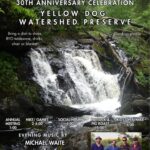
30th Anniversary Celebration
26 Jun, 25

2025 Fly-fishing Workshop on the Yellow Dog
11 Jun, 25

2025 Bentley Trail Ski & Snowshoe Event
07 Feb, 25

2024 Annual Meeting and Hike, 10/26
07 Oct, 24

